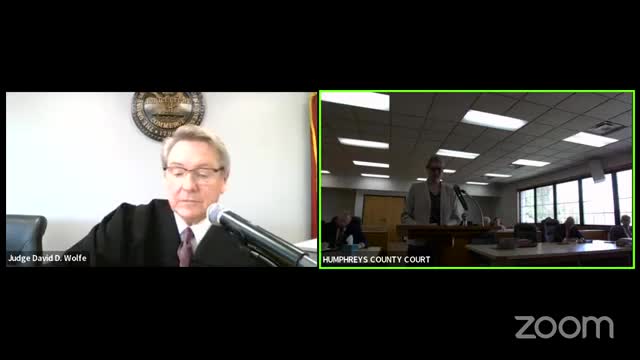Crane accident case reveals critical rigging failures
October 02, 2024 | Judge David D. Wolfe State of Tennessee, Judicial, Tennessee
This article was created by AI summarizing key points discussed. AI makes mistakes, so for full details and context, please refer to the video of the full meeting. Please report any errors so we can fix them. Report an error »

In a recent court hearing, discussions centered around the liability of Maxim Crane Services in a case involving a crane accident that resulted in injuries to a plaintiff. Key testimonies revealed that the sole Maxim employee on-site, a crane operator, was not responsible for rigging the equipment involved in the incident. Witnesses consistently stated that the rigging was handled by employees from HL Services, led by Hunter Langford, who secured the connections to the equipment known as a bag house.
The crane operator testified that he was unable to see the rigging details from his position in the crane and that he operated the crane correctly, following the hand signals given by Langford's crew. The consensus among witnesses was that the bag house fell due to a failure in the rigging, specifically that it came unhooked, although the exact cause of this failure remains unclear.
Plaintiffs' counsel argued that at least one of the defendants, including Maxim, could be negligent, suggesting that the crane operator had a duty to halt operations if he noticed any unsafe conditions. However, the operator and other witnesses maintained that there were no visible issues with the rigging at the time of the lift.
Defense attorneys for Scepter and HL Services pointed out that there was testimony indicating the lift was uneven, which could have contributed to the rigging failure. They emphasized that the crane operator's actions during the lift could potentially be scrutinized, as improper lifting techniques might create undue stress on the rigging.
As the hearing progressed, the court was urged to consider the lack of evidence supporting claims of negligence against the crane operator. The case remains in its early stages, with further discovery and expert testimony anticipated to clarify the circumstances surrounding the accident and the responsibilities of each party involved.
The crane operator testified that he was unable to see the rigging details from his position in the crane and that he operated the crane correctly, following the hand signals given by Langford's crew. The consensus among witnesses was that the bag house fell due to a failure in the rigging, specifically that it came unhooked, although the exact cause of this failure remains unclear.
Plaintiffs' counsel argued that at least one of the defendants, including Maxim, could be negligent, suggesting that the crane operator had a duty to halt operations if he noticed any unsafe conditions. However, the operator and other witnesses maintained that there were no visible issues with the rigging at the time of the lift.
Defense attorneys for Scepter and HL Services pointed out that there was testimony indicating the lift was uneven, which could have contributed to the rigging failure. They emphasized that the crane operator's actions during the lift could potentially be scrutinized, as improper lifting techniques might create undue stress on the rigging.
As the hearing progressed, the court was urged to consider the lack of evidence supporting claims of negligence against the crane operator. The case remains in its early stages, with further discovery and expert testimony anticipated to clarify the circumstances surrounding the accident and the responsibilities of each party involved.
View full meeting
This article is based on a recent meeting—watch the full video and explore the complete transcript for deeper insights into the discussion.
View full meeting
